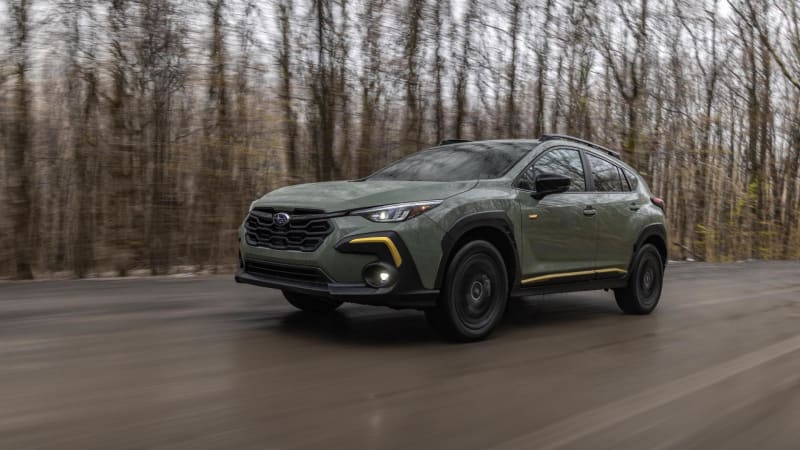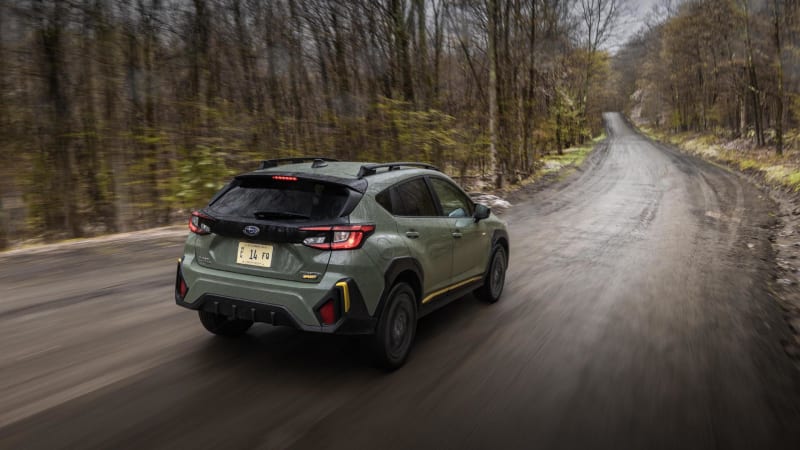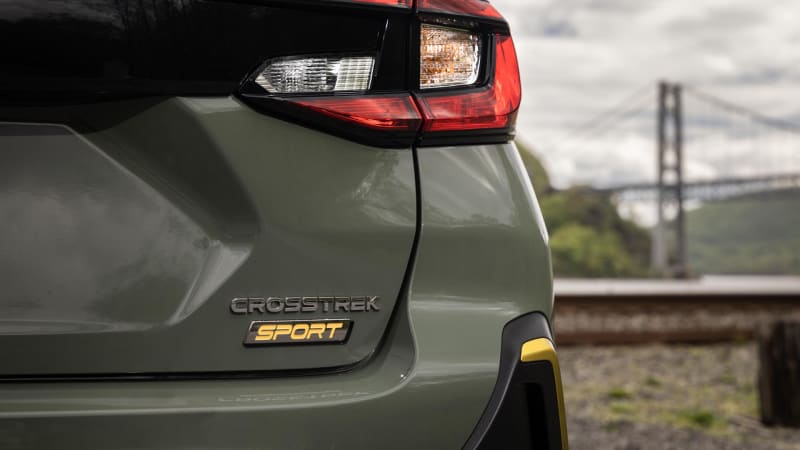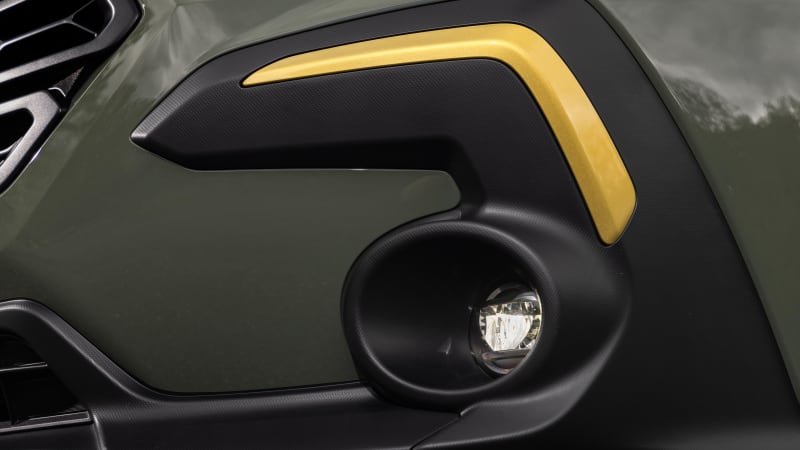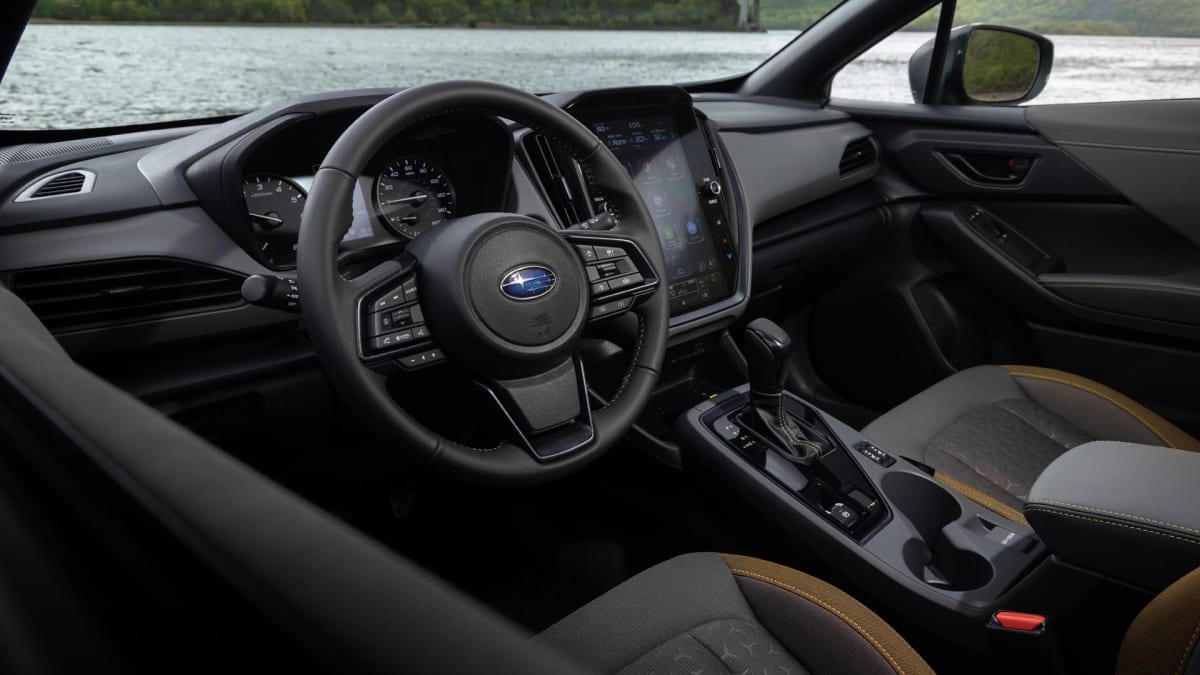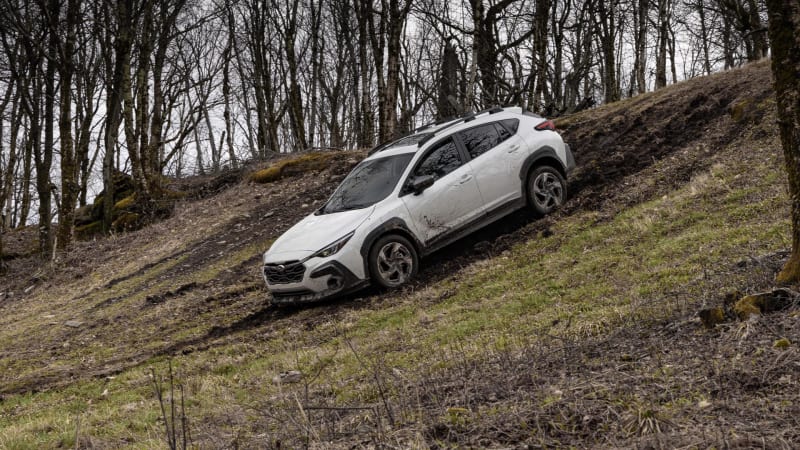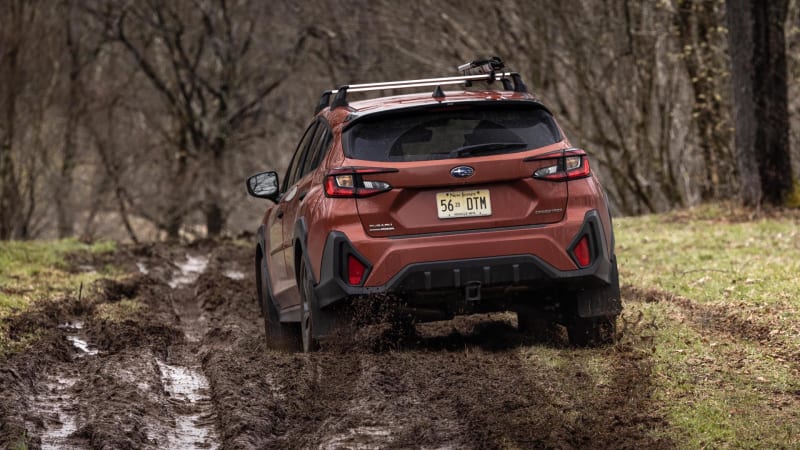WOODSTOCK, N.Y. — This one is pretty simple. The 2024 Subaru Crosstrek with its 2.5-liter four-cylinder upgrade over the meek 2.0-liter is the one you want. In fact, it should probably just be the base engine in this little crossover.
We’ve already driven the redesigned 2024 model in its smaller-engine form — you can read all about the big changes and updates to the model in that Crosstrek first drive review. In this one, we’re going to focus specifically on the 2.5-liter. It would be easy to think the engine’s carried over unchanged with just a quick glance through the spec sheet. The only vital figure that stands out as different from 2023 is its torque rating of 178 pound-feet, which is 2 pound-feet more than before. Thrilling, right? The 2.5-liter even retains its same 182-horsepower rating. The torque curve, however, is slightly changed from before, as Subaru managed to move peak torque 700 rpm lower in the rev band to 3,700 rpm. This helps the engine provide a similar feeling of forward thrust as before without working as hard, which is nice considering this boxer really needs to get its revs up to get moving.
So, what changes did Subaru make? Subaru says the extra 2 pound-feet can be attributed to a new and more efficient intake design, along with final engine tuning. A number of other behind-the-scenes tweaks were made to improve the engine performance in general. A new rocker cover, camshaft design and engine mounts (aluminum instead of resin) all improve NVH. A new catalytic converter, alongside the new intake, improves efficiency. Plus, Subaru says it updated parts for longevity and reliability purposes, such as the piston rings and exhaust manifold. Don’t think of it as a new engine, but still far more changed than the specs would suggest.
Subaru didn’t have a 2.0-liter version of the Crosstrek on hand to get a comparative feel, but luckily, I happened to be testing one before taking off for New York. In short, the 2.0-liter is a slug. It feels even slower than the 9-ish-second 0-60-mph times various outlets have been seeing. That may be comparable to a Honda HR-V or Toyota Corolla Cross, but then those are two of the slowest new cars on sale today. Worse, if you’re driving at altitude as so many Subaru owners do, getting up steep mountains can be a trying, tach-needle-pegged experience. Even just keeping up with exuberant rush-hour traffic at sea level takes extra effort. While the rest of the world gently leans into their torque-rich, boosted, little four-cylinder, you’ll have your foot buried in the Crosstrek 2.0’s throttle just to maintain pace.
This is where the 2.5-liter comes into play. Just the simple act of pulling out onto a main road first thing in the morning is enough to know this is the engine you want. It’s not that the 2.5-liter turns the Crosstrek into a speed demon — far from it. But the extra displacement and torque allow you to accelerate at a normal pace of traffic. Merging onto the highway or quickly passing a tractor on a country road can be done without extra thought or worry. Subaru estimated a 0-60 mph time of about 8.2 seconds with the prior generation’s 2.5-liter, and we’d estimate about the same for this one. That’s still not quick, but it’s solidly average for the segment, and quick enough to satisfy all those Crosstrek owners who complained about their cars being slow.
Many of the changes Subaru made to the Crosstrek in general improve matters further for the 2.5-liter. The extra chassis rigidity, sound deadening and vibration reductions make for a much more pleasant interior atmosphere under heavy acceleration. You don’t hear or feel that flat-four clattering and buzzing away as much as before, so even when revs rise above and beyond 4,000 rpm — where the meat of the torque really comes on — the in-cabin feel is less frenetic and far more refined.
Subaru says it re-tuned the continuously variable transmission for the 2.5-liter’s new torque curve to take advantage of the lower peak torque, but it largely behaves the same as any other Subaru CVT. The revs will pogo back and forth when you have the throttle matted in an attempt to simulate shifts, and it remains responsive enough to throttle inputs to do the job. Fuel economy is very obviously the priority, unless you stick it in the “SI-Drive” sport mode, making the transmission more eager to get the revs up into the engine’s sweet spot. Cruising around in the “I” intelligent mode will net you the 2.5-liter’s best fuel economy, which is almost identical to the 2.0-liter’s. The two engines achieve the same 29-mpg-combined rating, though the 2.5 curiously gets 26 mpg city and 33 mpg highway – 1 mpg lower in each cycle. Your fuel cost savings for going with the 2.0-liter will be minimal at best.
The 2.5-liter comes standard on the Sport and Limited trim levels, plus the upcoming Crosstrek Wilderness that we’ll drive at a later date. Despite the Sport name, there are no chassis differences between it and the non-Wilderness trims, meaning that it not surprisingly handled the same as a Crosstrek with the 2.0-liter would during our on-road drive through the Catskill Mountains.
It’s bound to perform better off-road, however, as the 2.5-liter trims also get an additional X-Mode off-road drive mode dubbed “Deep Snow/Mud.” To prove its mettle, Subaru stuck us on a muddy, rutted-up two-track that goes up and down a ski hill. The Crosstrek performed valiantly despite the 18-inch wheels and all-season passenger car tires on the little crossover. There was one rather steep and muddy hill that a few other journalists needed to take several goes at, but having faith in Subaru’s all-wheel-drive system did the trick for me. Even when forward momentum slowed to a crawl, the slip-control programming that gets turned on in Deep Snow/Mud mode did a good job keeping the wheels turning and mud-slinging all while slowly stepping the car up a rain-slicked hill with sub-optimal tires. The Crosstrek in general, like the Ford Bronco Sport, is particularly fun to drive through narrow off-road trails due to its small size that Subaru retained from the previous generation (it’s actually a hair smaller in at least one noteworthy dimension). Plus, its soft-and-plush ride on asphalt comes into its own when you’re bombing up a rocky, poorly maintained dirt track.
Besides the engine and X-Mode upgrades, the Sport pictured in this review comes with a bunch of unique appearance extras, including the gold exterior accents and muted gold interior add-ons. It’s the most interesting Crosstrek to look at besides the Wilderness, but if you want all of the luxury goodies that Subaru makes available, you’ll need to get the mechanically equal Limited. Starting price on the Sport is $30,290, and the Limited pushes that to $32,190 before options. We would prefer if Subaru offered the 2.5-liter as a standalone option on lower trims to get into the ideal powertrain at a lower price point, but just over $30,000 for a subcompact SUV with this level of equipment and off-road capability doesn’t sound like a bad value. Still, the base model at $26,290 plus a $1,000 or $1,500 engine upgrade option would be rather enticing. Just like the previous-generation, the conclusion for 2024 is the same: Spring for the bigger engine.


